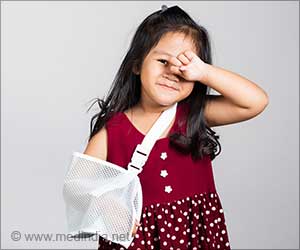They discovered that people who fractured a bone more than once as children had more than double the chances of breaking a bone as adults. This resulted in reduced bone density at the hip in women at the age of 45.
The participants in this study were young for studying fracture risk and osteoporosis, but if lifestyle changes to promote bone density can be implemented earlier in life, it may have the greatest influence on lifelong bone health and osteoporosis risk reduction.
Childhood Fractures Predict the Development of Osteoporosis
One in every two children breaks a bone throughout their childhood, with nearly a quarter of boys and 15% of girls experiencing repeated fractures.
Advertisement
However, understanding why certain children break bones repeatedly or whether this predicts adult bone health is still not clear.
Children fracture bones for a variety of reasons. Previous research has found that children who fracture reside in poorer households, engage in more rigorous exercise, are overweight or have a high body mass index, have vitamin D deficiency and low calcium intake, and may be subjected to physical abuse.
Children who fracture frequently may have exceptionally brittle bones, be ‘accident-prone,’ or develop bone fractures during sports or physical exercise.
However, a crucial topic is whether children who break bones experience transitory decreases in bone strength during rapid growth, or if these bone abnormalities persist until adulthood.
The persons investigated were all a part of the one-of-a-kind Dunedin Study, which followed the development of a thousand newborns born in Otepoti, Dunedin, between April 1972 and March 1973.
The researchers discovered that both boys and girls who had many fractures as children were more than twice as likely to fracture as adults. Furthermore, individuals who were fracture-free as children tended to remain so as adults ().
Childhood fractures were related to the reduced bone mineral density at the hip later in life in females, but not in males.
To conclude, parents of children who fracture frequently as children should be taught about various methods to prevent persistent skeletal fragility with age.
Reference :
- Fracture history in osteoporosis: risk factors and its effect on quality of life – (https:pubmed.ncbi.nlm.nih.gov/25667782/)
Source: Medindia



